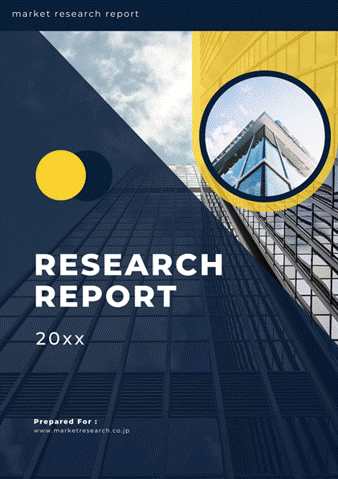 | • レポートコード:MRC2304G097 • 出版社/出版日:Mordor Intelligence / 2023年2月 • レポート形態:英文、PDF、180ページ • 納品方法:Eメール(受注後2-3営業日) • 産業分類:食品 |
| Single User | ¥703,000 (USD4,750) | ▷ お問い合わせ |
| Corporate License | ¥1,295,000 (USD8,750) | ▷ お問い合わせ |
• お支払方法:銀行振込(納品後、ご請求書送付)
レポート概要
| Mordor Intelligence社の市場調査レポートによると、世界のノンアルコール飲料市場規模が予測期間中にCAGR 4.7%拡大すると見られています。本レポートでは、ノンアルコール飲料の世界市場を調査対象とし、イントロダクション、調査手法、エグゼクティブサマリー、市場動向、種類別(炭酸飲料、非炭酸飲料)分析、流通チャネル別(スーパーマーケット/大型スーパーマーケット、コンビニエンスストア、専門店、オンラインストア、その他)分析、地域別(アメリカ、カナダ、メキシコ、ドイツ、イギリス、フランス、スペイン、ロシア、イタリア、中国、インド、日本、オーストラリア、ブラジル、アルゼンチン、サウジアラビア、南アフリカ)分析、競争状況、市場機会・将来動向などを整理しました。並びに、市場調査の対象企業には、PepsiCo Inc.、The Coca-Cola Company、Danone SA、Nestle SA、Red Bull GmbH、Keurig Dr Pepper Inc.、Parle Agro、Monster Beverage Corporation、AriZona Beverages USA 、IBS Partners Ltdなどが含まれています。 ・イントロダクション ・調査手法 ・エグゼクティブサマリー ・市場動向 ・世界のノンアルコール飲料市場規模:種類別 - 炭酸飲料の市場規模 - 非炭酸飲料の市場規模 ・世界のノンアルコール飲料市場規模:流通チャネル別 - スーパーマーケット/大型スーパーマーケットチャネルの市場規模 - コンビニエンスストアチャネルの市場規模 - 専門店チャネルの市場規模 - オンラインストアチャネルの市場規模 - その他チャネルの市場規模 ・世界のノンアルコール飲料市場規模:地域別 - 北米のノンアルコール飲料市場規模 アメリカのノンアルコール飲料市場規模 カナダのノンアルコール飲料市場規模 メキシコのノンアルコール飲料市場規模 … - ヨーロッパのノンアルコール飲料市場規模 ドイツのノンアルコール飲料市場規模 イギリスのノンアルコール飲料市場規模 フランスのノンアルコール飲料市場規模 … - アジア太平洋のノンアルコール飲料市場規模 中国のノンアルコール飲料市場規模 インドのノンアルコール飲料市場規模 日本のノンアルコール飲料市場規模 … - 南米/中東のノンアルコール飲料市場規模 ブラジルのノンアルコール飲料市場規模 アルゼンチンのノンアルコール飲料市場規模 サウジアラビアのノンアルコール飲料市場規模 … ・競争状況 ・市場機会・将来動向 |
The non-alcoholic beverages market is projected to register a CAGR of 4.7% over the forecast period.
Demand for healthy beverages and consumer preference for unique and different flavors is expected to drive the market for non-alcoholic beverages across regions. The young population is increasingly becoming health-conscious, driving the demand for zero-calorie beverages or those with fewer calories. The demand is also fuelled by growth in the functional beverages category, including sports drinks, due to higher average participation in physical activities. With increasing health awareness and growing demand from millennials, the sports drink segment of the market is identified as the fastest-growing sub-segment.
Non-alcoholic Beverages Market Trends
Strong Demand from Fitness Conscious Consumers
Athletes typically consume sports and energy drinks during high-intensity exercise to replenish fluids and electrolytes and provide instant energy. Therefore, it is mainly consumed by sportspersons, gym-goers, and fitness enthusiasts to speed rehydration, provide instant energy, and promote overall recovery after exercise. For instance, in February 2022, Applied Nutrition launched its new L-Carnitine sports drink. This new drink contains zero sugar, zero calories, 1,500 mg of L-Carnitine, and vitamins B3, B6, and B12.
Increasing consumption of energy drinks is observed in regions such as North America, where there is an existing coffee culture. Companies offer innovative products, ingredients, and flavors for energy drinks in the United States, where the average caffeine consumption stood at 135 mg per capita.
Asia-Pacific Holds a Significant Share in the Market
The Asian-Pacific food and beverage industry is growing at the highest possible rates, surpassing that of developed regions like Western Europe and North America. The region is witnessing a demand for cleaner and more minimalistic beverage products, which is depicted by the rising consumer awareness, as they seek more from products that claim to be ‘organic’ or ‘free from.’ Consumer awareness of allergies, hormones, and unethical animal husbandry practices utilized in the food and beverage industry has increased the popularity of veganism. Therefore, the demand for plant-based drinks is constantly increasing. Thus, companies started to launch plant-based beverages. For instance, in July 2022, GO MATE launched a product line of natural energy drinks. The company has made a set of flavors that use all-natural ingredients.
In developing countries like China, India, etc., consumers’ inclination and participation in fitness activities and sports have rapidly increased to attain a healthy lifestyle. This, in turn, increases the demand for healthy or functional beverages. For instance, in March 2021, Red Bull released the summer edition dragon fruit flavored drink. This Summer 2021 Edition was inspired by the Asian native and exotic fruit called dragonfruit or pitaya, depending on the location. This is available in 250 ml and 350 ml cans.
Non-alcoholic Beverages Market Competitor Analysis
The non-alcoholic beverages market is highly competitive due to the large number of companies that manufacture functional beverages. Some major players in the market, such as PepsiCo Inc., The Coca-Cola Company, Danone SA, Red Bull GmbH, and Nestlé SA, offer consumers a wide range of carbonated and functional beverages.
Expansions and new agreements/partnership strategies remain the most popular among key global players in the non-alcoholic drinks industry. Due to high market potential, companies are expanding their presence and increasing their production capacity.
Additional Benefits:
- The market estimate (ME) sheet in Excel format
- 3 months of analyst support
1 INTRODUCTION
1.1 Study Assumptions and Market Definition
1.2 Scope of the Study
2 RESEARCH METHODOLOGY
3 EXECUTIVE SUMMARY
4 MARKET DYNAMICS
4.1 Market Drivers
4.2 Market Restraints
4.3 Porter’s Five Forces Analysis
4.3.1 Bargaining Power of Suppliers
4.3.2 Bargaining Power of Buyers
4.3.3 Threat of New Entrants
4.3.4 Threat of Substitute Products
4.3.5 Intensity of Competitive Rivalry
5 MARKET SEGMENTATION
5.1 By Type
5.1.1 Carbonated Beverage
5.1.2 Non-carbonated Beverage
5.1.2.1 Fruit and Vegetable Juice
5.1.2.2 Functional Drinks
5.1.2.3 RTD Tea and Coffee
5.1.2.4 Bottled Water
5.1.2.5 Other Types
5.2 By Distribution Channel
5.2.1 Supermarkets/Hypermarkets
5.2.2 Convenience Stores
5.2.3 Speciality Stores
5.2.4 Online Stores
5.2.5 Other Distribution Channels
5.3 By Geography
5.3.1 North America
5.3.1.1 United States
5.3.1.2 Canada
5.3.1.3 Mexico
5.3.1.4 Rest of North America
5.3.2 Europe
5.3.2.1 Germany
5.3.2.2 United Kingdom
5.3.2.3 France
5.3.2.4 Spain
5.3.2.5 Russia
5.3.2.6 Italy
5.3.2.7 Rest of Europe
5.3.3 Asia-Pacific
5.3.3.1 China
5.3.3.2 India
5.3.3.3 Japan
5.3.3.4 Australia
5.3.3.5 Rest of Asia-Pacific
5.3.4 South America
5.3.4.1 Brazil
5.3.4.2 Argentina
5.3.4.3 Rest of South America
5.3.5 Middle East & Africa
5.3.5.1 Saudi Arabia
5.3.5.2 South Africa
5.3.5.3 Rest of Middle East & Africa
6 COMPETITIVE LANDSCAPE
6.1 Strategies Adopted by Leading Players
6.2 Market Share Analysis
6.3 Company Profiles
6.3.1 PepsiCo Inc.
6.3.2 The Coca-Cola Company
6.3.3 Danone SA
6.3.4 Nestle SA
6.3.5 Red Bull GmbH
6.3.6 Keurig Dr Pepper Inc.
6.3.7 Parle Agro
6.3.8 Monster Beverage Corporation
6.3.9 AriZona Beverages USA
6.3.10 IBS Partners Ltd
7 MARKET OPPORTUNITIES AND FUTURE TRENDS